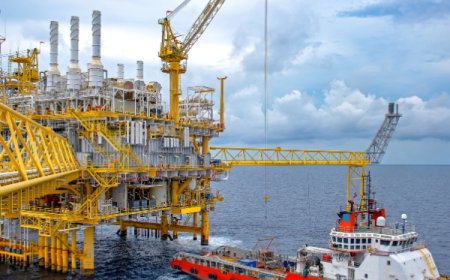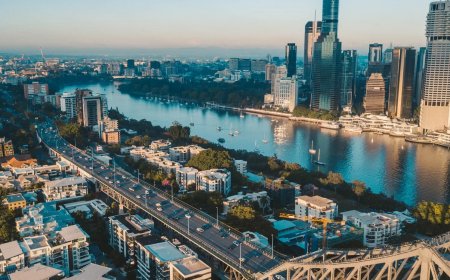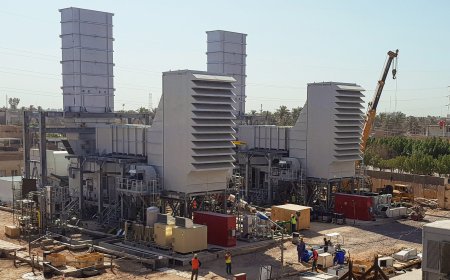Vertical Farming: Can It Work in Pakistan’s Urban Areas?
Explore how vertical farming can solve food challenges in Pakistan's cities. Learn how this smart, space-saving method fits urban life and future farming.

As cities in Pakistan continue to grow, so does the need for sustainable agriculture to feed the rising urban population. With limited space, poor soil conditions, and increasing demand for fresh, local produce, vertical farming has emerged as a key part of smart farming in Pakistan. This approach uses modern farming techniques to grow food in stacked layers, often using controlled environments and less water. But the big question remains: Can vertical farming work in Pakistans urban areas? Lets explore how this innovative technique works, its benefits, and whether it can be successfully adopted in Pakistani cities.
? What is Vertical Farming?
Vertical farming is the practice of growing crops in stacked layers, often inside buildings or controlled environments such as greenhouses or containers. This method uses hydroponics, aeroponics, or aquaponics instead of traditional soil-based farming. Controlled temperature, lighting (LEDs), and nutrients allow year-round production without relying on weather or large amounts of land.
? Why Urban Areas in Pakistan Need Vertical Farming
Pakistans major cities like Karachi, Lahore, and Islamabad face several urban challenges:
Overpopulation and shrinking land availability
Rising food prices and poor supply chains
Pollution and reduced air/water quality
Dependence on rural agriculture for food
These issues directly impact food quality, affordability, and availability in cities. Vertical farming offers a local, space-efficient, and climate-smart way to grow fresh produce closer to consumers.
? Benefits of Vertical Farming in Urban Pakistan
1. Space-Efficient Farming
Vertical farms can be built on rooftops, in basements, or even in unused urban buildings. This makes it perfect for space-constrained cities like Karachi and Lahore.
2. Water Conservation
Vertical farming uses up to 90% less water than traditional agriculture. In a water-stressed country like Pakistan, this is a major advantage.
3. Pesticide-Free Food
Controlled environments reduce the need for chemical pesticides, promoting cleaner and healthier food for urban consumers.
4. Year-Round Crop Production
Unlike seasonal farming, vertical systems can grow crops all year by managing light, temperature, and nutrients.
5. Job Creation & Urban Employment
Vertical farms can create new job opportunities in urban areas for tech-savvy youth, agronomists, and agri-business professionals.
6. Reduced Transportation Costs
Growing food near where its consumed reduces the need for cold storage, transportation, and food waste.
? What Would It Take to Implement Vertical Farming in Pakistan?
1. Affordable Technology
While vertical farming equipment such as LED lighting, hydroponic systems, and climate control tech can be expensive, local manufacturing or government subsidies can reduce costs.
2. Awareness and Training
Most farmers and investors in Pakistan are unfamiliar with vertical farming. Training centers and pilot projects can help introduce this concept.
3. Policy Support
The government can promote vertical farming through incentives, research grants, and tax relief for urban agriculture startups.
4. Private Sector Involvement
Businesses in Pakistans food and retail sectors can invest in vertical farms to ensure a steady supply of organic and fresh produce for consumers.
5. Academic Collaboration
Universities can play a role by researching plant varieties suitable for vertical farming and educating students on modern agriculture practices.
? What Can Be Grown Through Vertical Farming?
Vertical farms are best suited for:
Leafy greens (lettuce, spinach, kale)
Herbs (mint, basil, coriander)
Tomatoes, strawberries, and cucumbers (in larger, advanced systems)
Microgreens (popular in upscale restaurants)
These crops are high-value and commonly consumed in urban diets, making vertical farming both useful and profitable in cities.
? Is Vertical Farming Profitable in Pakistan?
The initial cost of setup can be high, but vertical farming becomes profitable over time due to:
Higher yields per square foot
Reduced water and fertilizer use
Premium pricing for organic, pesticide-free produce
Demand from restaurants, supermarkets, and health-conscious buyers
Urban entrepreneurs and agri-tech startups can treat vertical farming as a long-term investment with strong growth potential, especially as food demand rises.
? Global Inspiration: Examples That Pakistan Can Follow
Countries like Singapore, the Netherlands, and the UAE have adopted vertical farming successfully, despite space and climate challenges. Pakistan, with its skilled youth and growing urban middle class, has the potential to follow in their footstepsif the right support systems are in place.
?? Early Signs of Progress in Pakistan
Some small-scale hydroponic farms already operate in Islamabad, Lahore, and Karachi. These early adopters show that Pakistans urban environment is suitable for vertical farmingespecially if public awareness and investments increase.
? Conclusion: A Vertical Future?
Can vertical farming work in Pakistans urban areas? The answer is yesbut with careful planning, support, and investment. It is a smart, space-saving, and sustainable solution to many urban agricultural challenges. As cities grow, we need farming methods that grow with them.
If supported by policymakers, entrepreneurs, and the agriculture community, vertical farming can play a major role in feeding Pakistans future citiesone vertical layer at a time.



























